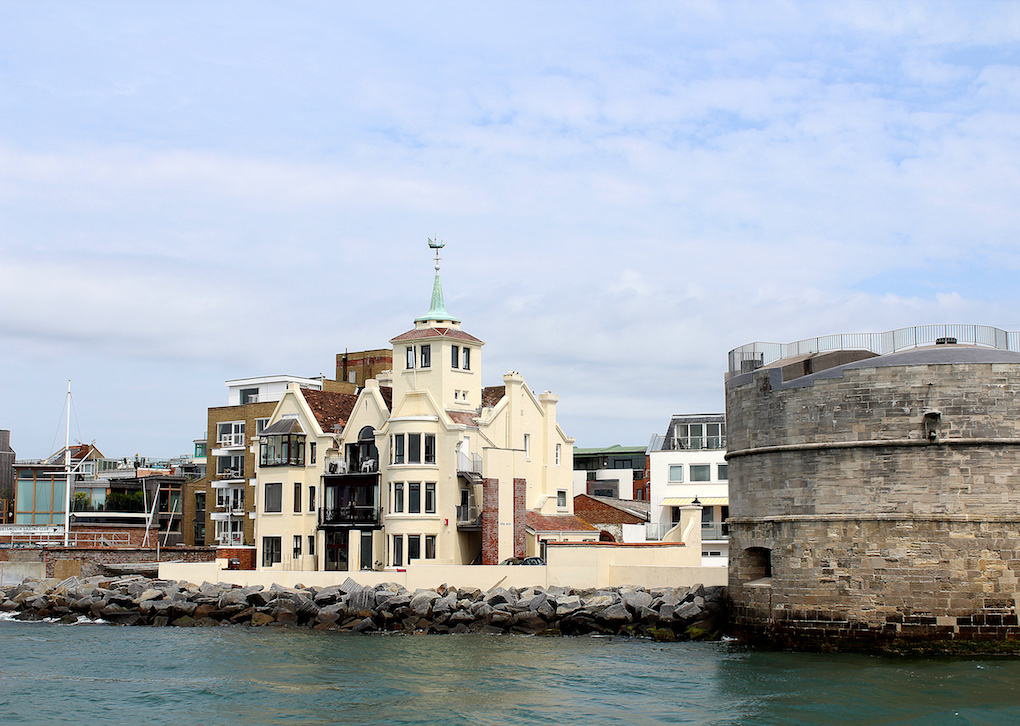Portsmouth Point is the spit of land to starboard as you sail through the narrow bottleneck into Portsmouth Harbour from the Solent. It’s chock full of history, much of it disreputable since it was largely outside the city walls and a leisure resort for shore-leave sailors. There were reputed to be over 30 pubs in this small area – now there are just three, including the Bridge Tavern which has a huge cartoon version of Rowlandson’s rollicking ‘Portsmouth Point’ painting on its south side.
It starts with the Square Tower, 1494, which boasts a guilded bust of Charles I set high up in a niche on its landward side, presented by the monarch on his return from France.
Then comes the even older Round Tower, and next-door to it, with its crowning square cupola, Tower House, home of the great marine artist W L Wyllie. A little further along is the tall white-and-blue home of the Portsmouth Sailing Club which he helped found in 1920. It used to start its races right opposite in the narrows – and still does on Christmas

Main photo: The Round Tower and Wyllie’s house. Above: The Hailing Station and beyond, the 18th-century Quebec House, where the writer Herman Melville stayed.
Day, when the ferry traffic is suspended.
Beside the slipway is a quaint clapboard building, Quebec House; it used to be a bath house and hotel. Herman Melville stayed there on Christmas Eve 1849, before catching his ship to America next day with a sea-chest full of books in his cabin, and the germ of Moby Dick in his brain. It’s possible he began writing the book during the voyage.
Just beyond is a curious lookout hut, set on piles in the tideway. This is the Hailing Station, used by Lloyds agents to ask where from or whither bound, and what cargo.
There’s still boatbuilding in the area – John Perry, builder of Victorys has a little yard, and the corner of the Camber Dock now houses the new headquarters of Ben Ainslie’s America’s Cup challenge. Peter Willis


